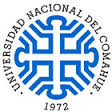- RDI Principal
- →
- Facultad de Lenguas
- →
- Actas
- →
- Ver ítem
JavaScript is disabled for your browser. Some features of this site may not work without it.
Mostrar el registro sencillo del ítem
| dc.creator | Espinosa, Gonzalo Eduardo | |
| dc.creator | Scilipoti, Paola Mabel | |
| dc.date | 2012 | |
| dc.date.accessioned | 2019-03-13T23:44:49Z | |
| dc.date.available | 2019-03-13T23:44:49Z | |
| dc.identifier | http://rdi.uncoma.edu.ar/handle/uncomaid/13788 | |
| dc.description.abstract | We have been inspired to write this work thanks to our experiences for one academic year as Foreign Language Teaching Assistants (FLTA) in Aberdeenshire, Scotland, and Arkansas, USA; respectively granted by British Council- and Fulbright-Ministerio de Educación. Our duties as FLTAs consisted in helping in speaking and writing sessions, testing, teaching, designing materials, and being in charge of cultural activities related to food and dance in secondary schools and universities. Today’s globalized world has permeated education, and interculturality has recently been integrated in the English as a Foreign/Second Language classroom, broadening the language experience by including cultural aspects in a lesson. This is why we believe that understanding others is essential for communication and cooperation. As Sercu (2005) states, “foreign language education is, by definition, intercultural. Bringing a foreign language to the classroom means connecting learners to a world that is culturally different from their own” and promoting “the acquisition of intercultural competence in the learners” (Sercu 2005: 1). When teaching a foreign language, diverse forms of living and understanding the world get into the classroom by means of audiovisual materials, texts, talks, coursebooks and realia. Thanks to these sources, all members in the FL classroom can discover a foreign culture and contrast it with their own. The underlying aim is to work with and form pluricultural individuals, i.e. learners with the ability to recognize others and be aware of their own traditions and values. As it is not always essential to travel abroad to be pluriculturally competent, some practical ideas will be shown as a way of exemplifying lessons that are culturally focused and exploitable from a pluricultural point of view. | en-EN |
| dc.format | application/pdf | |
| dc.language | eng | |
| dc.publisher | Universidad Nacional del Comahue. Facultad de Lenguas | |
| dc.relation.uri | http://bibliotecadelenguas.uncoma.edu.ar/items/show/190 | |
| dc.rights | Atribución-NoComercial-SinDerivadas 2.5 Argentina | es_ES |
| dc.rights.uri | https://creativecommons.org/licenses/by-nc-sa/2.5/ar/ | es_ES |
| dc.source | Actas en CD del 2° Congreso Nacional El conocimiento como espacio de encuentro | |
| dc.subject | Lenguas Extranjeras | es-ES |
| dc.subject | Enseñanza | es-ES |
| dc.subject.other | Lingüística | es-ES |
| dc.title | The importance of being pluricultural: blooming with the other | en |
| dc.type | documento de conferencia | es |
| dc.type | conferenceObject | eu |
| dc.type | acceptedVersion | eu |
| dc.description.fil | Fil: Espinosa, Gonzalo Eduardo. Universidad Nacional del Comahue. Facultad de Lenguas; Argentina. | es-ES |
| dc.description.fil | Fil: Scilipoti, Paola Mabel. Universidad Nacional del Comahue. Facultad de Lenguas; Argentina. | es-ES |
| dc.cole | Actas | es_ES |
Ficheros en el ítem
| Ficheros | Tamaño | Formato | Ver |
|---|---|---|---|
|
No hay ficheros asociados a este ítem / ver Orígen del documento. |
|||


